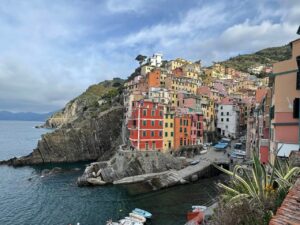One of the most written about women in South African history, Krotoa has become the subject of a documentary, a play, a poem and now a film by Roberta Durrant. Krotoa is a South African historical drama based on a young Khoi woman, who was removed from her tribe to serve Jan van Riebeeck and assimilate the Dutch language and culture in the mid 17th century. Based on historical facts, the screenwriters have essentially adapted and dramatised a historical overview of the influential interpreter and mediator, who experienced many challenges adapting to life between the Goringhaicona tribe and the household of the first Governor of the Cape Colony.
Largely ignored for more than two centuries, scholars now regard Krotoa (also known as Eva) as a woman who shows a universality in terms of her treatment under the colonial system worldwide. The renewed interest in her story, an international focus on race relations and a resurgence in female-led films made this seem like the perfect time for this drama biopic to emerge. While important and underwritten by good intentions, Krotoa struggles to leverage powerful themes and compel itself as a drama. Laden with contentious topics such as colonialism, culture, environment, gender, politics, race, rape… you’d expect a powder keg of a drama. Yet, the film-makers have opted for a safer journey, extrapolating a history lesson in the form of a docile character portrait.
The film’s stellar cast includes: Crystal-Donna Roberts as Krotoa, Armand Aucamp as Jan van Riebeeck, Roeline Daneel as Maria van Riebeeck, Brendon Daniels as Autshumato, Jacques Bessenger as Pieter Van Meerhof, Marcel van Heerden as Wagenaar and Deon Lotz as Roelof de Man. Roberts gives an earnest and impassioned performance that sets the tone for the rest of the talented ensemble, who chime in with a sense of trepidation or uncertainty.
While fictional, this paradise turned imperial conquest has been criticised for its simplistic representation of the Khoi people. Much like any historical recreation, the onus is on the film-makers to endeavour to capture an accurate and respectable representation of people, places and events. While “based on historical facts” gives some creative freedom, it doesn’t necessarily guarantee documentary realism or nuance. Durrant’s made a concerted effort to effect an authentic picture of the Cape of Good Hope during this time. Shooting on-location, using naked landscapes and natural lighting, she’s maintained a lush feeling and a pioneering spirit. Shells, beads and traditional animal hide garments juxtapose against the jauntier fabrics and hats of the Dutch, giving Krotoa a diverse pageantry. There’s a valiant attempt to use the traditional dialect of the Khoisan, while the Dutch contingent speak a modernised version of Afrikaans.

“…”
The culture clash, sweeping landscapes, arrival of horses and wide-brimmed hats give Krotoa a Western vibration. While at first, the regal dress sense and pomp give it a camp quality, this mostly dissipates as Krotoa becomes more accustomed to the foreign culture. While this low budget film stands firm, its lack of depth makes it comparable with Dr Quinn: Medicine Woman for quality when it was probably aspiring for the pensive grandeur of a film like Silence. A lack of perceived character development, tension and nuance make it dramatically inert against some beautifully photographed visuals. With little camera movement, the film stagnates even further, dramatising chapters from Krotoa’s “cursed” life as if transposing oil paintings.
There’s such a keen awareness around capturing authentic visuals that the storytelling and subtext becomes secondary, an afterthought obscured by contrivances. This element is best exhibited by the choice to re-enact a famous Charles Davidson Bell painting of van Riebeeck’s arrival. It’s further evidenced as a commander comes to the rescue from nowhere, a woman interrupts a conversation as if eavesdropping and a companion happens to be a doctor. This is to the detriment of the dramatic sensibility, struggling to realise the dormant power of scenes and giving Krotoa a stale air. Without much nuance, it becomes a simplistic and dull retelling – diffused by earnest performances from a solid cast and an eclectic, magical and indigenous soundtrack.
It’s encouraging to see this chapter of South African history inspiring film-makers and there’s so much thematic material, it could easily warrant a TV series. Krotoa demonstrates, much like a pilot, that there’s scope for this story to be adapted for television. Taking this angle would allow more time to explore Krotoa’s unique experiences in more biographical detail, give the writers room to explore the ethics, morality and multitude of curious characters on both sides, and even siphon more thematic staying power from the historical retrospective.
Durrant’s ambitious undertaking shows great potential, but with so many moving parts, there’s only so much you can roll into one film. Krotoa features a solid cast, earnest performances, sweeping landscapes, rich historical detail, an eclectic soundtrack, poetic sentiment and the story remains important as ever. Unfortunately, it struggles to entrench the illusion – lacking nuance, story focus, an immersive environment, compelling characters and heartfelt drama.
The bottom line: Dormant
 Release date: Now showing
Release date: Now showing
Book Tickets at Ster-Kinekor
Book Tickets at Nu Metro
Catch more movie reviews at SPL!NG





